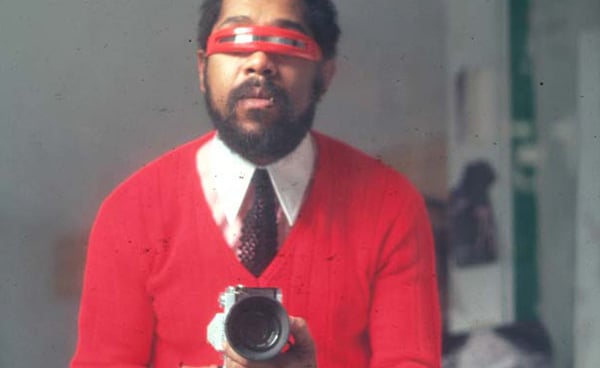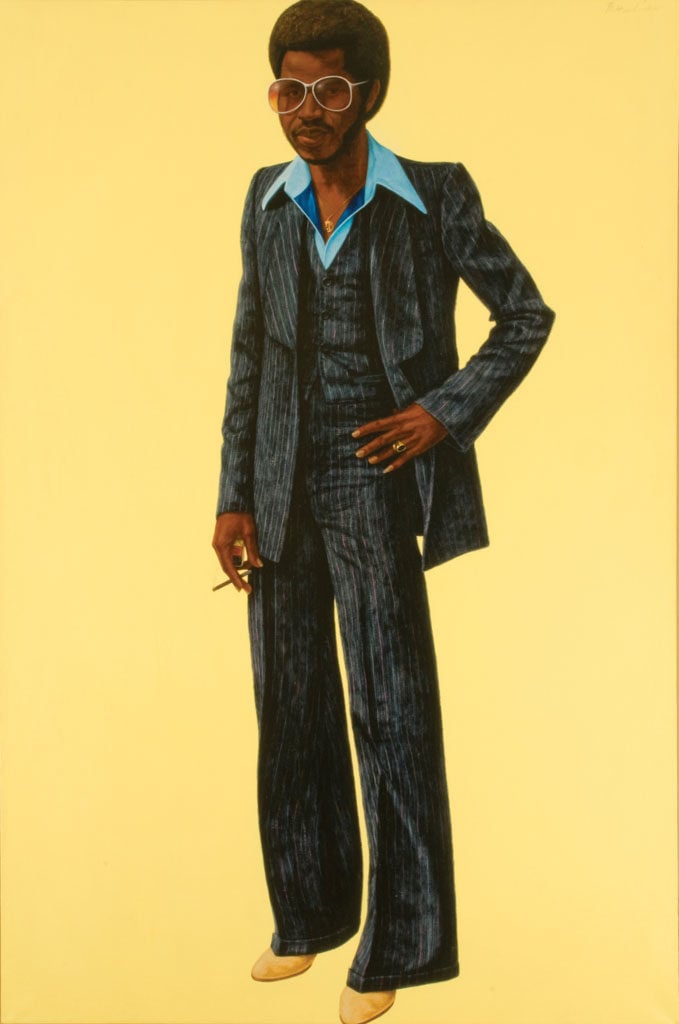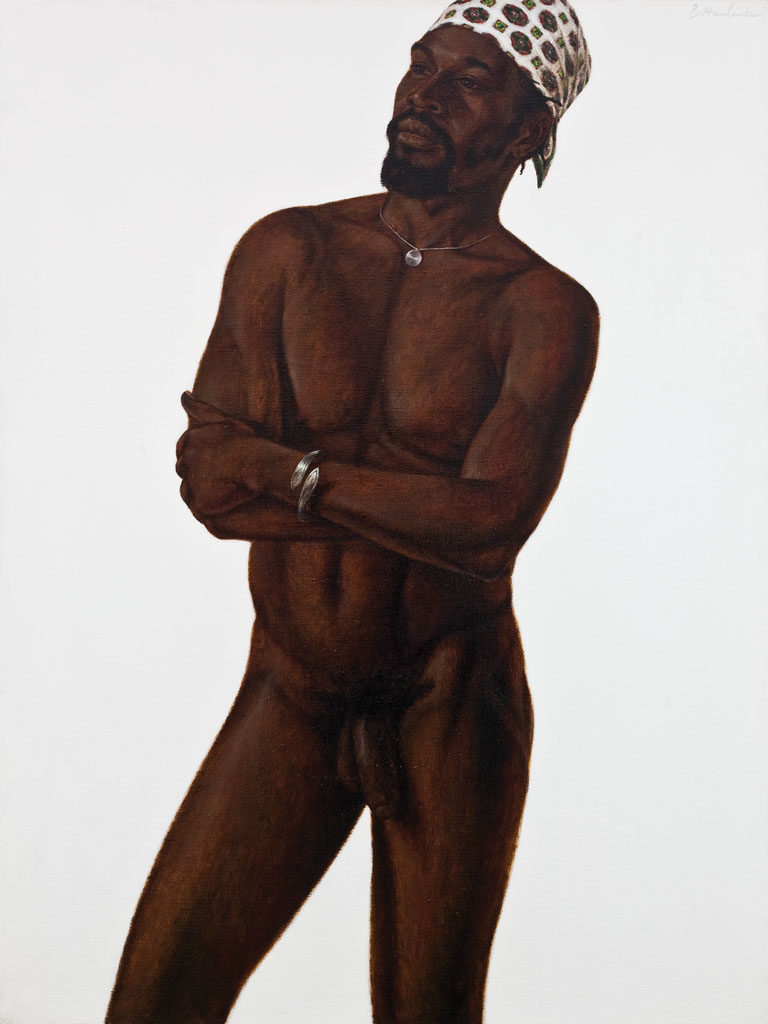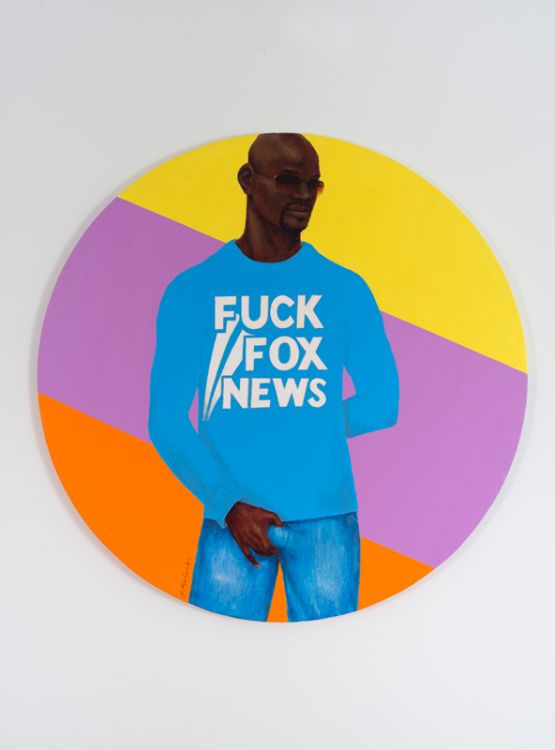Art World
Barkley Hendricks, Pioneering Portraitist of a Black American Ethos, Dies at 72
Hendricks was celebrated for his stylish depictions of black subjectivity.

Hendricks was celebrated for his stylish depictions of black subjectivity.

Barkley L. Hendricks, the famous African-American painter and photographer, died early this morning at the age of 72. He was known for his life-sized, colorful portraits of black American subjects, starting in the ’60s and continuing on into the present. Hendricks gained increasing international notoriety in recent years, following his celebrated travelling retrospective, “Barkley L. Hendricks: Birth of the Cool,” curated by Trevor Schoonmaker at the Nasher Museum of Art in 2008.
Jack Shainman, Hendricks’s New York gallery, released a statement announcing his passing: “We have had the great honor of working with Barkley since 2005. He was a situational painter, documenting the world around him in vivid and highly detailed paintings that capture the distinctive personalities of his subjects. He was a true artist’s artist, always dedicated to his singular vision; he was a figurative painter when it was trendy and especially when it wasn’t.”
Born on April 16, 1945 in Philadelphia, Hendricks was a student at the Pennsylvania Academy of Fine Arts, receiving his certificate, and, perhaps more importantly, falling in love with the art of oil painting. He continued to Yale University, where he earned both his undergraduate and graduate degrees, studying with figures including Bernard Chaet, Lester Johnson, Robert Reed, and Walker Evans. To pay for his tuition at Yale, he worked at the Philadelphia Parks and Recreation Department as an art teacher.

Barkley L. Hendricks, Noir (1978). Courtesy of Rubell Family Collection and Jack Shainman Gallery.
Early on, he started making abstractions, or what in his oral history with the Smithsonian’s Archives of American Art he termed “geometric-inspired basketball images,” before he established a practice focused on portraiture.
Like many other black artists in his circle at the time, Hendricks was inspired by black culture and in particular jazz music, hanging out in clubs and listening to greats like Julian Edwin “Cannonball” Adderley, Yusef Lateef, and Sam Jones. Hendricks roamed clubs and concerts in Philadelphia and later New York, taking photographs of jazz musicians and their fans.
This documentary practice evolved into the basis for Hendricks’s overall art practice: taking portraits of often African-American male subjects, and suffusing them with his distinct painterly style, displaying a sensitive eye for images of black beauty and excellence. This polished, beatific attention to black subjectivity has made Hendricks a touchstone for African-American art.

Barkley L. Hendricks, Fast Eddie (1975). Courtesy the artist and 30 Americans.
Trevor Schoonmaker, chief curator of the Nasher Museum of Art at Duke University, said the following of the artist, whom he also counted as a friend: “Over the past seventeen years Barkley and I have worked closely together on numerous exhibitions, talks and projects, but it is his deep friendship that I will miss the most. To be blunt, he changed the course of my life. With so many artists and writers now responding to his paintings and photography, Barkley stands out as an artist well ahead of his time.”

Barkley L. Hendricks, Roscoe (2016).
Photo: Courtesy of the artist and Jack Shainman Gallery, New York.
Hendricks was Professor Emeritus of Studio Art at Connecticut College. In recent years, he was awarded the 2016 Rappaport Prize, the President’s Award from the Amistad Center for Art and Culture in 2010, and a Joan Mitchell Foundation Award in 2008. Institutions that have exhibited his art include the Studio Museum in Harlem, New York; the Whitney Museum of American Art, New York; the Santa Monica Museum of Art, California; the Contemporary Arts Museum Houston, Texas; and the Philadelphia Museum of Art, Pennsylvania.